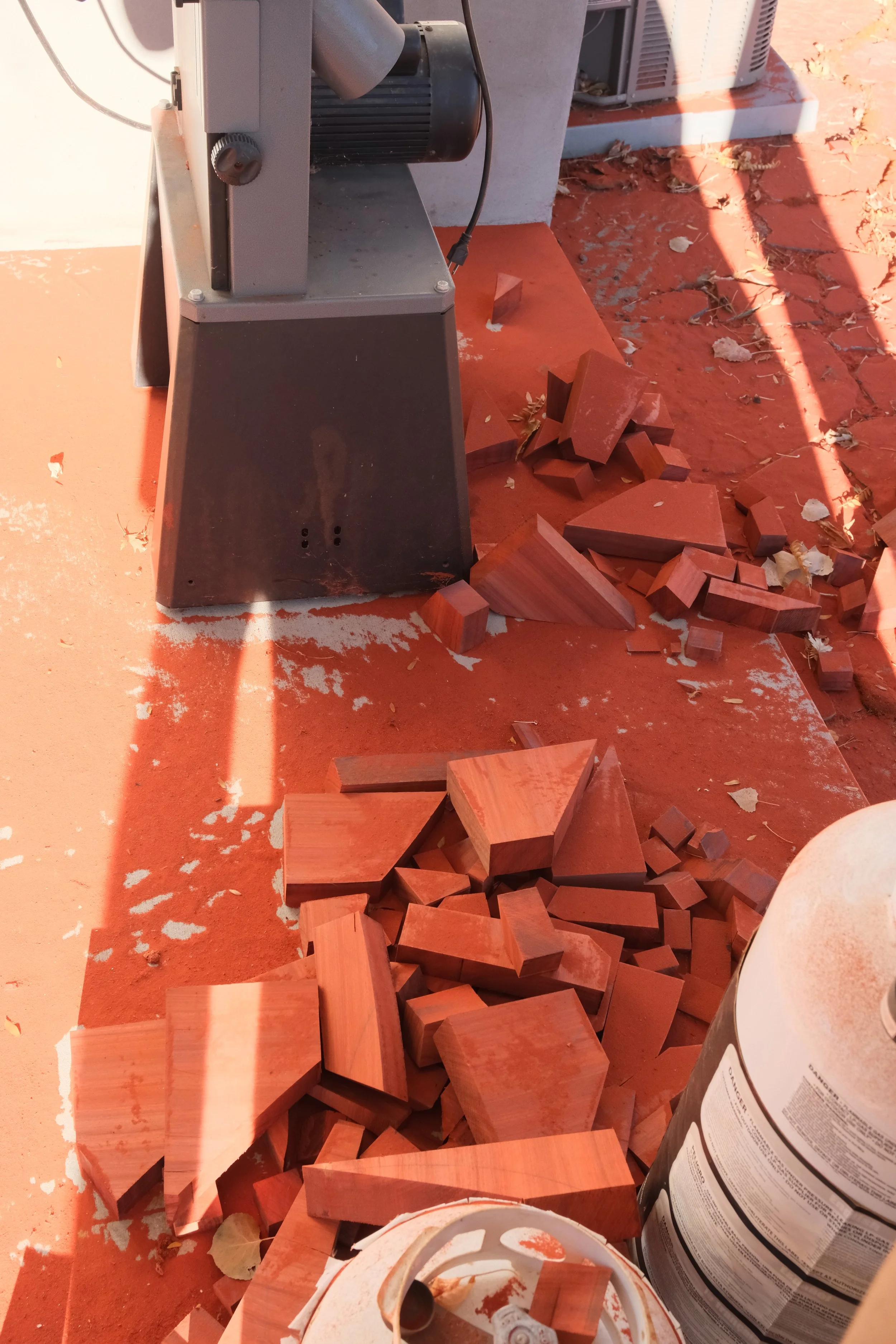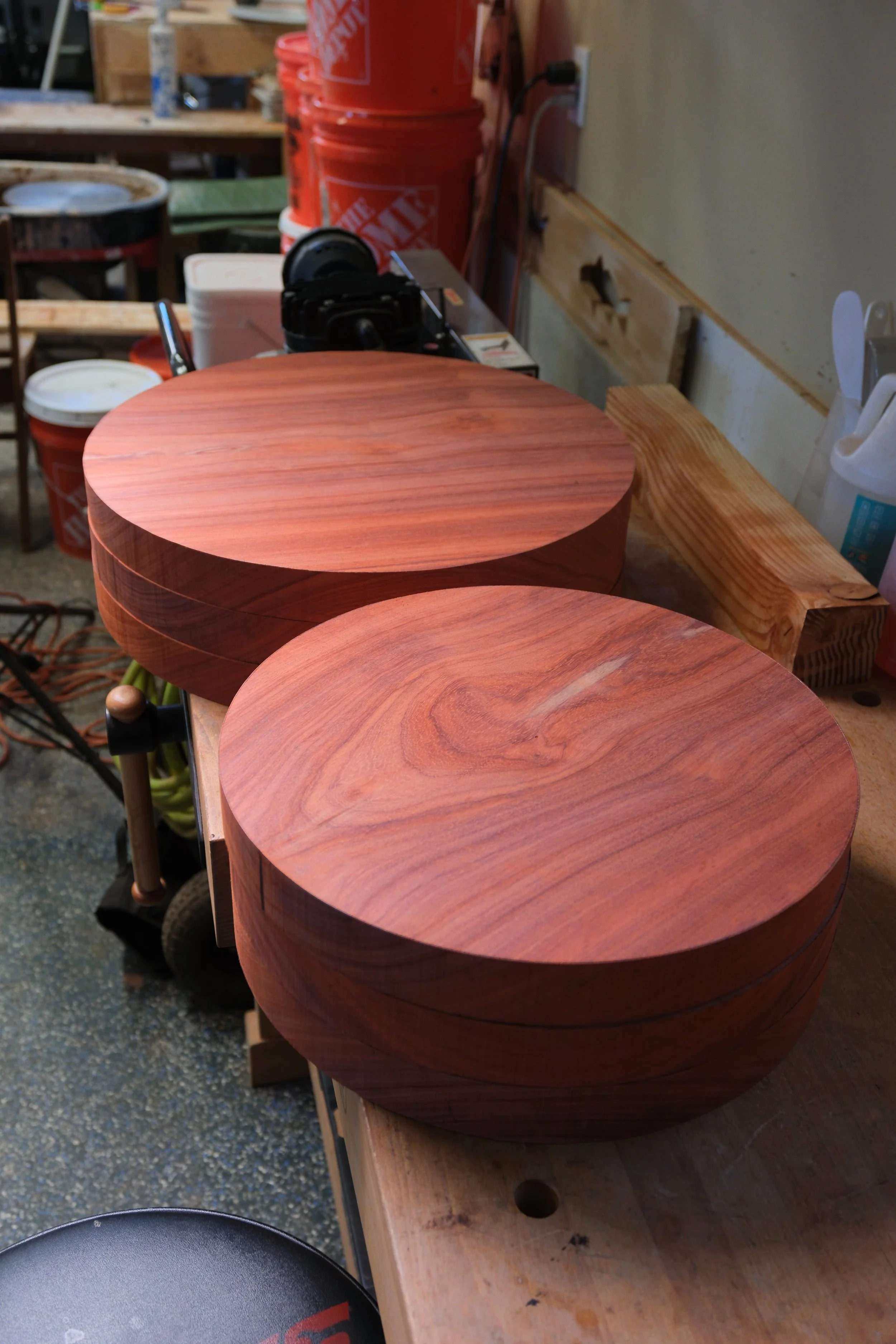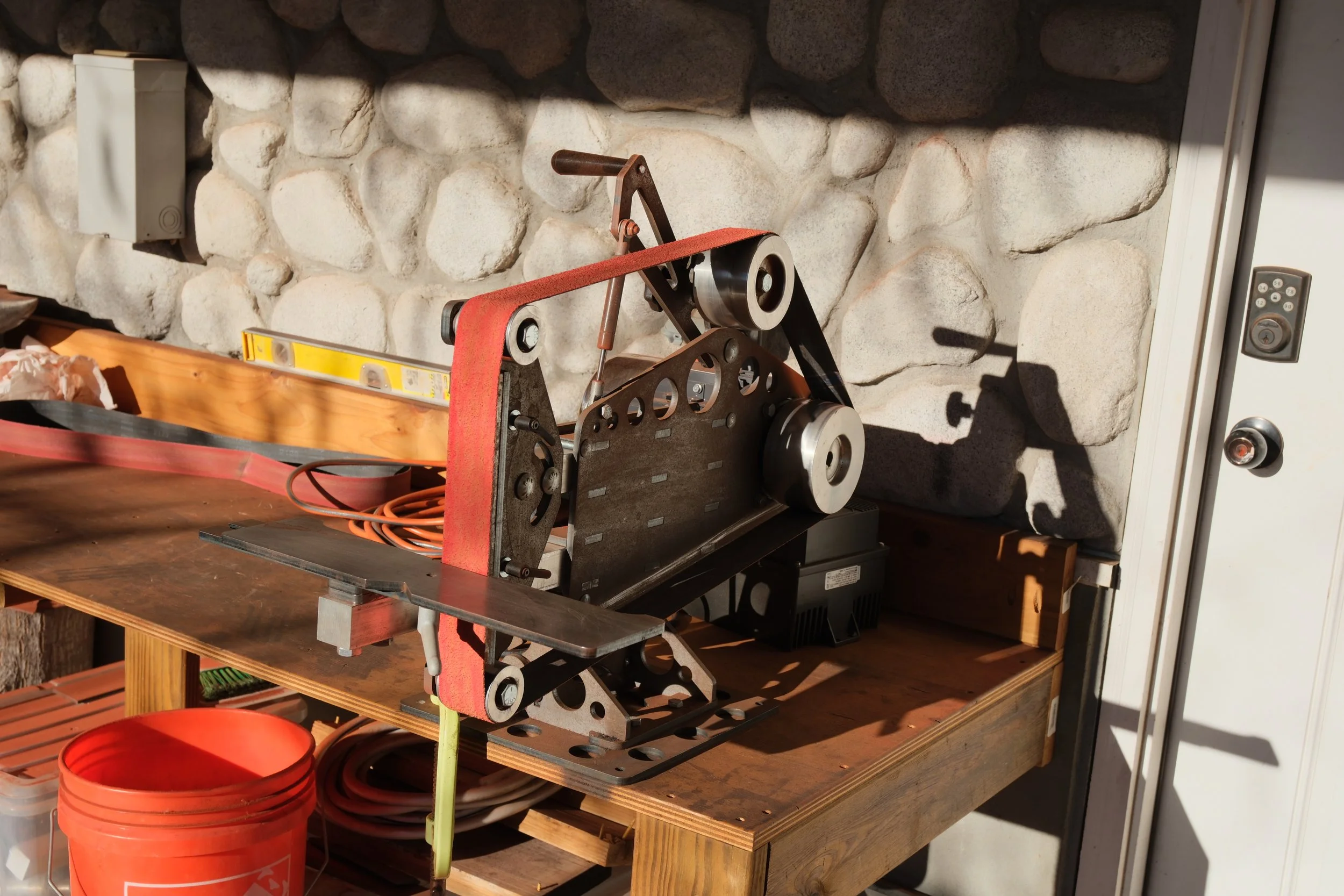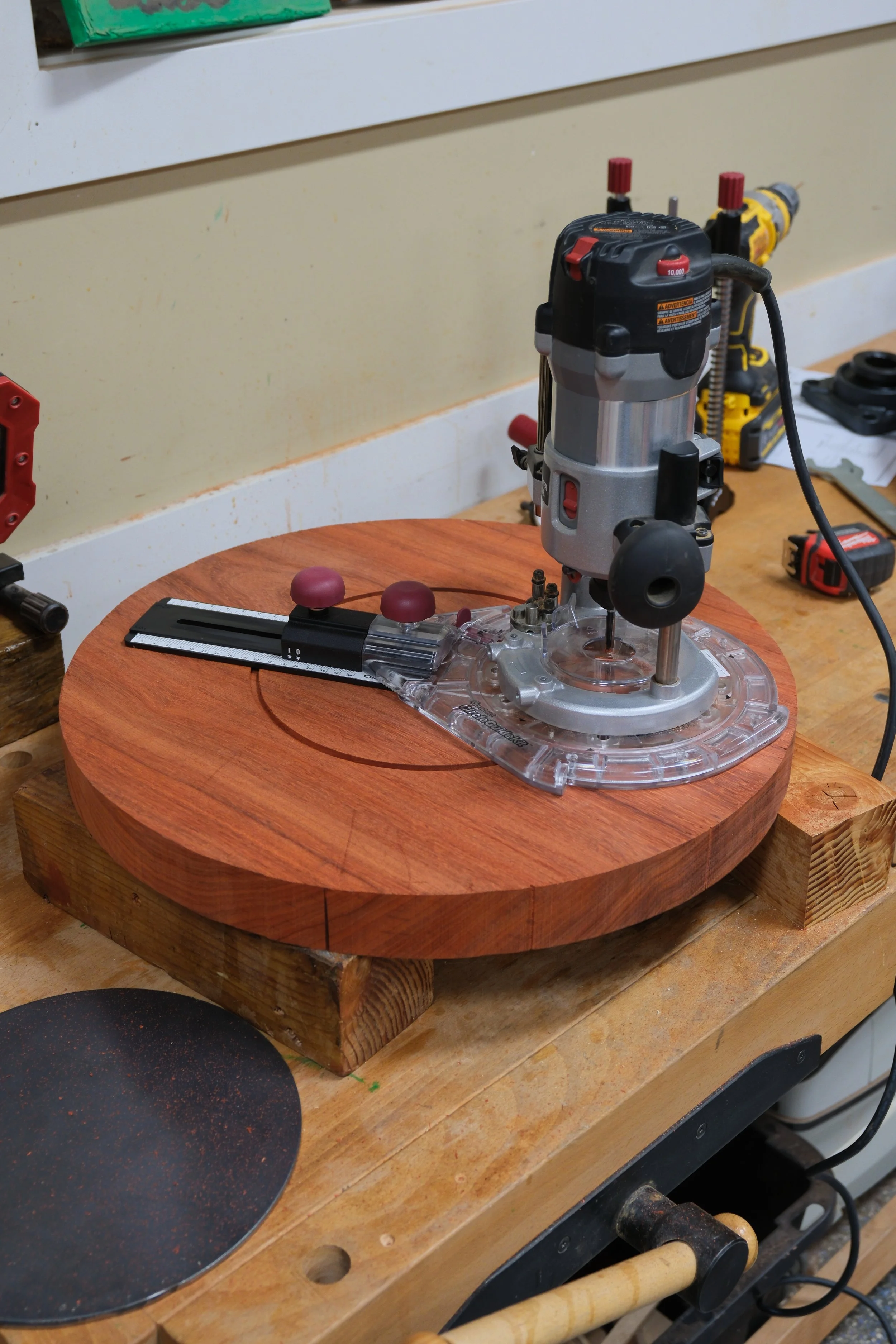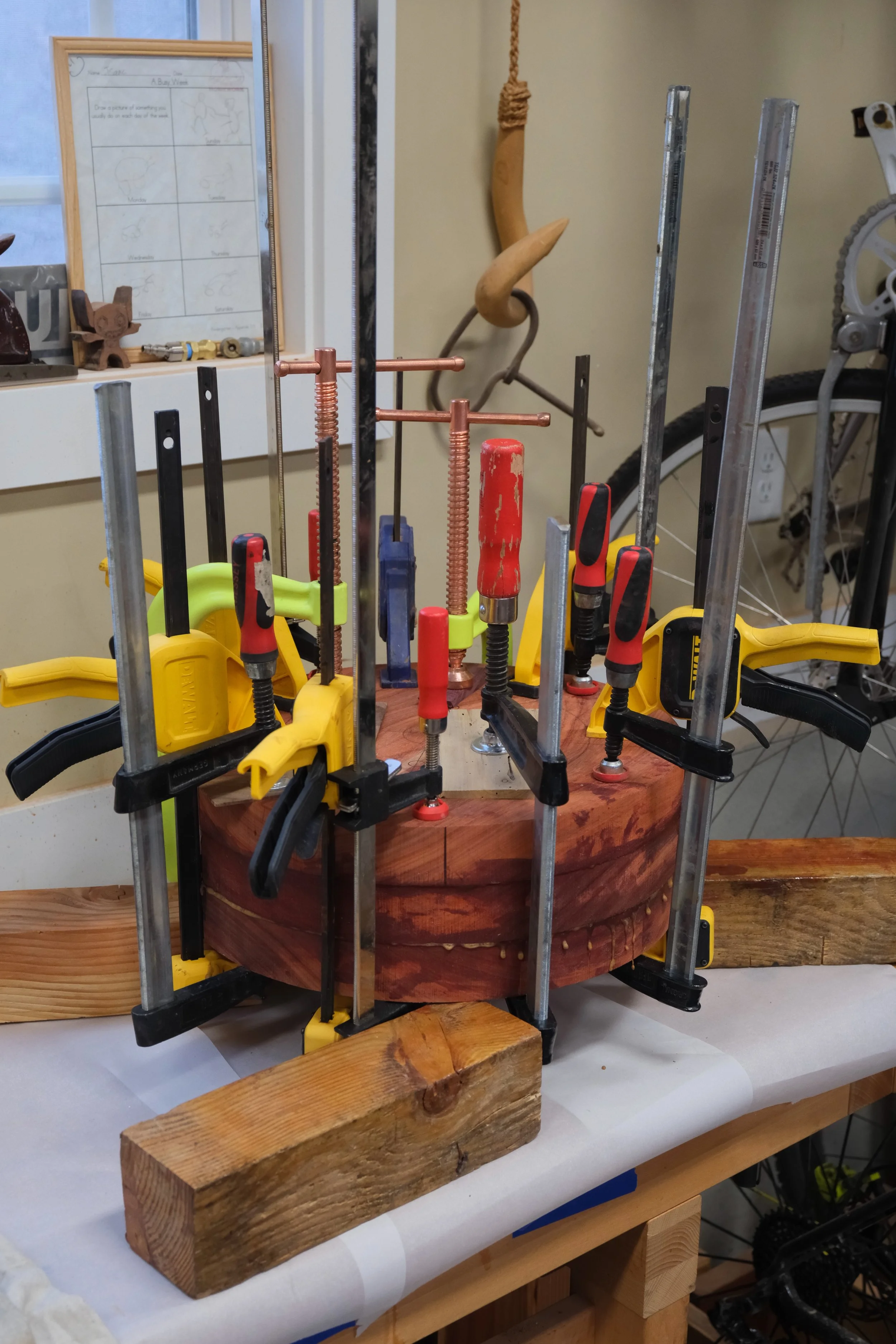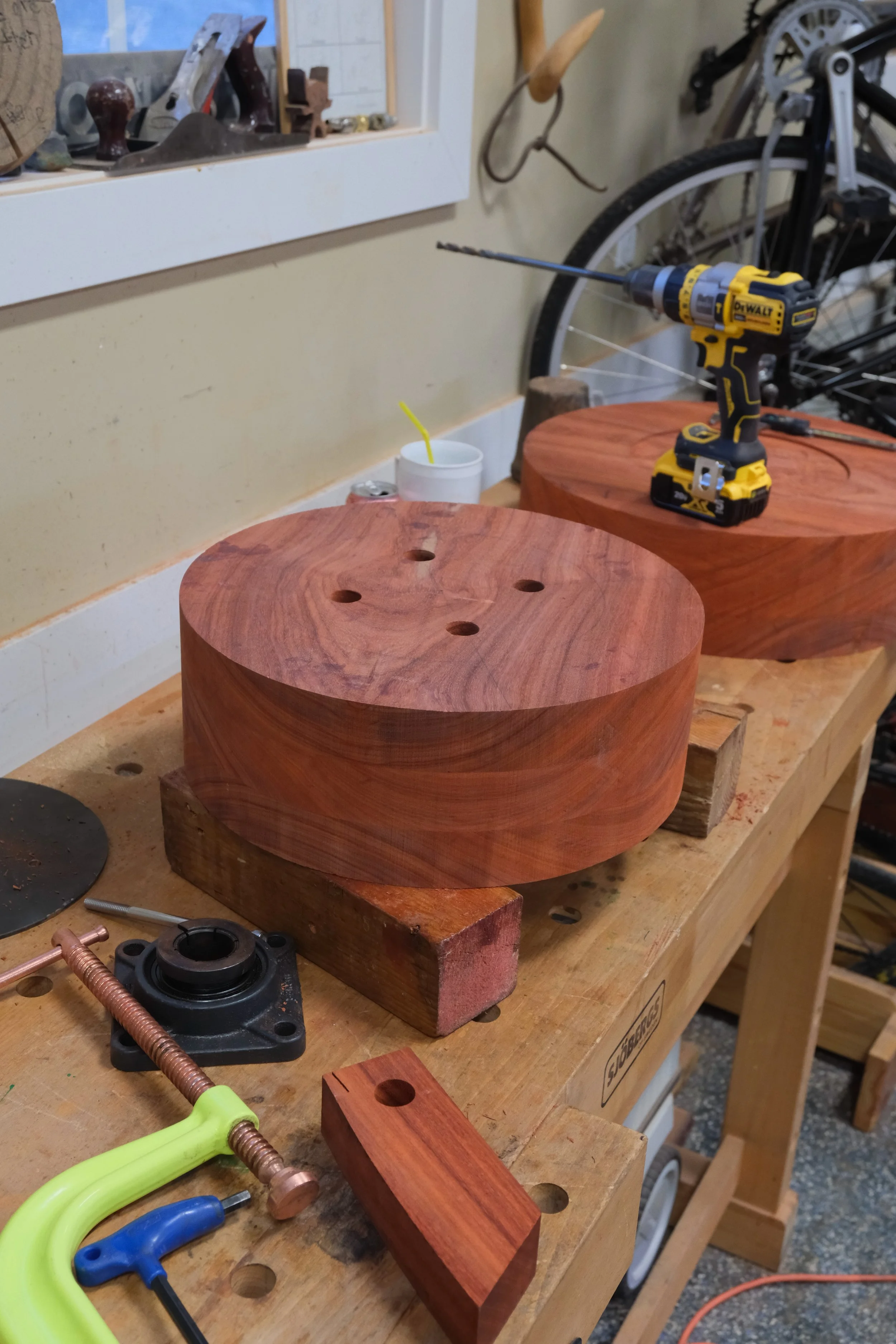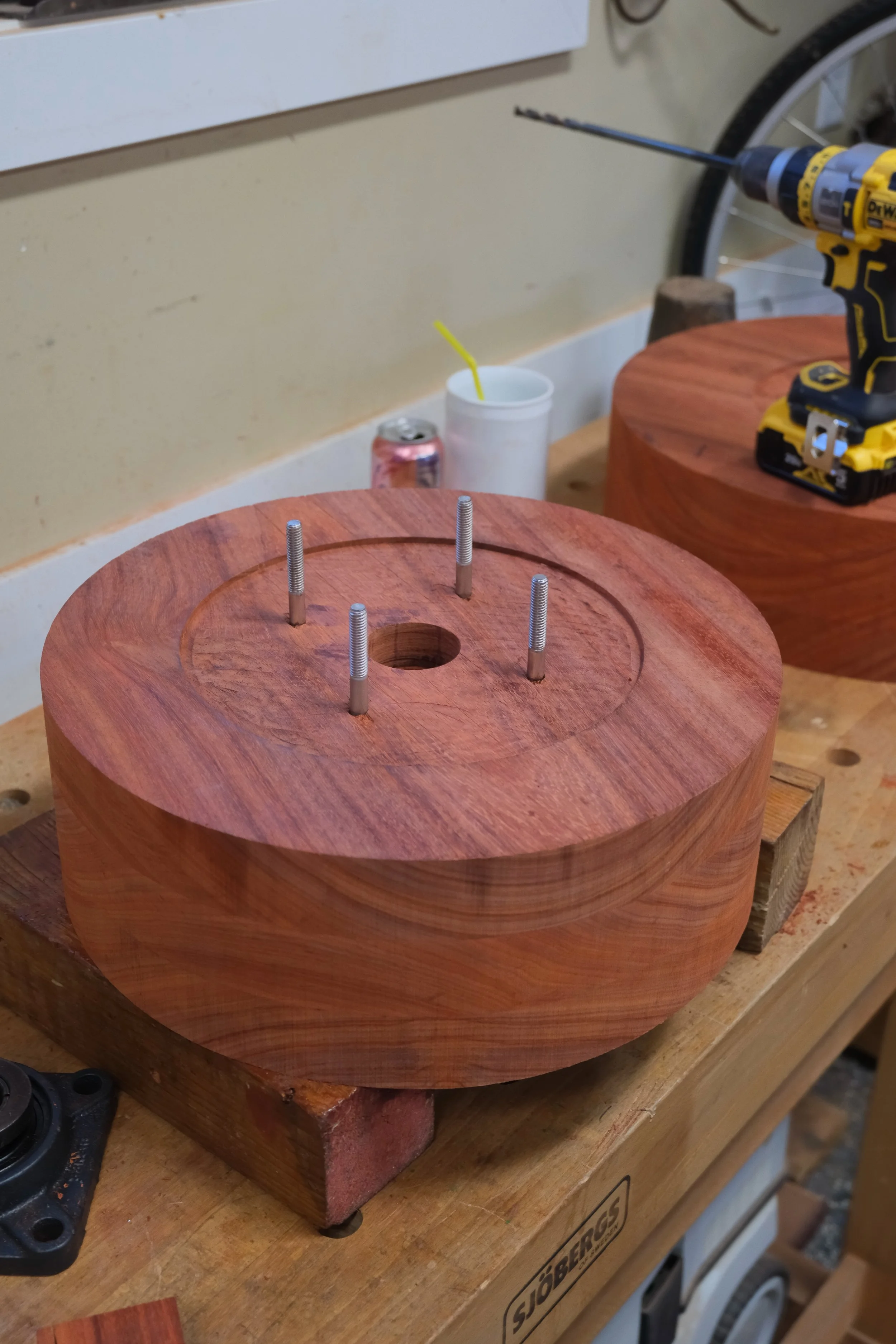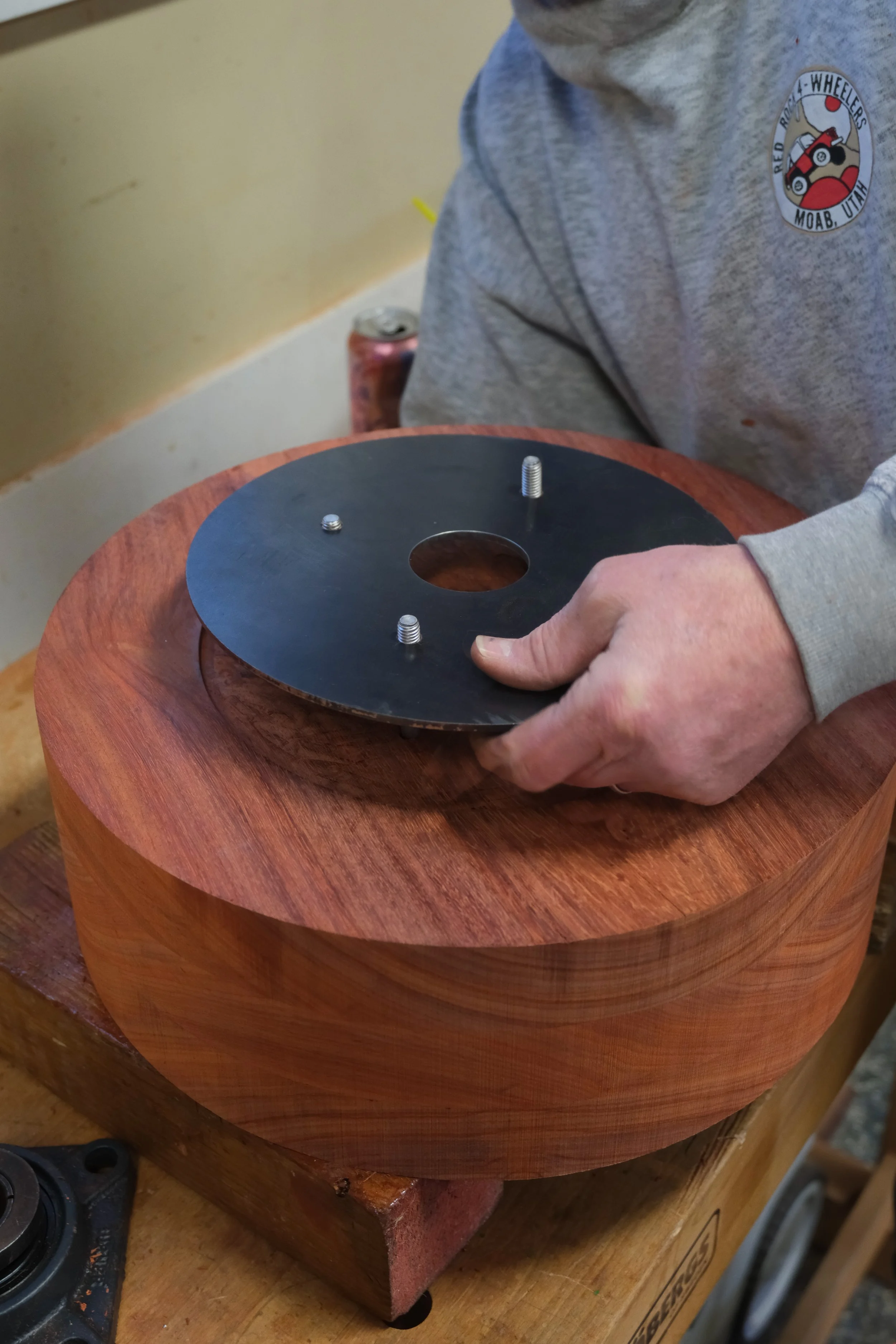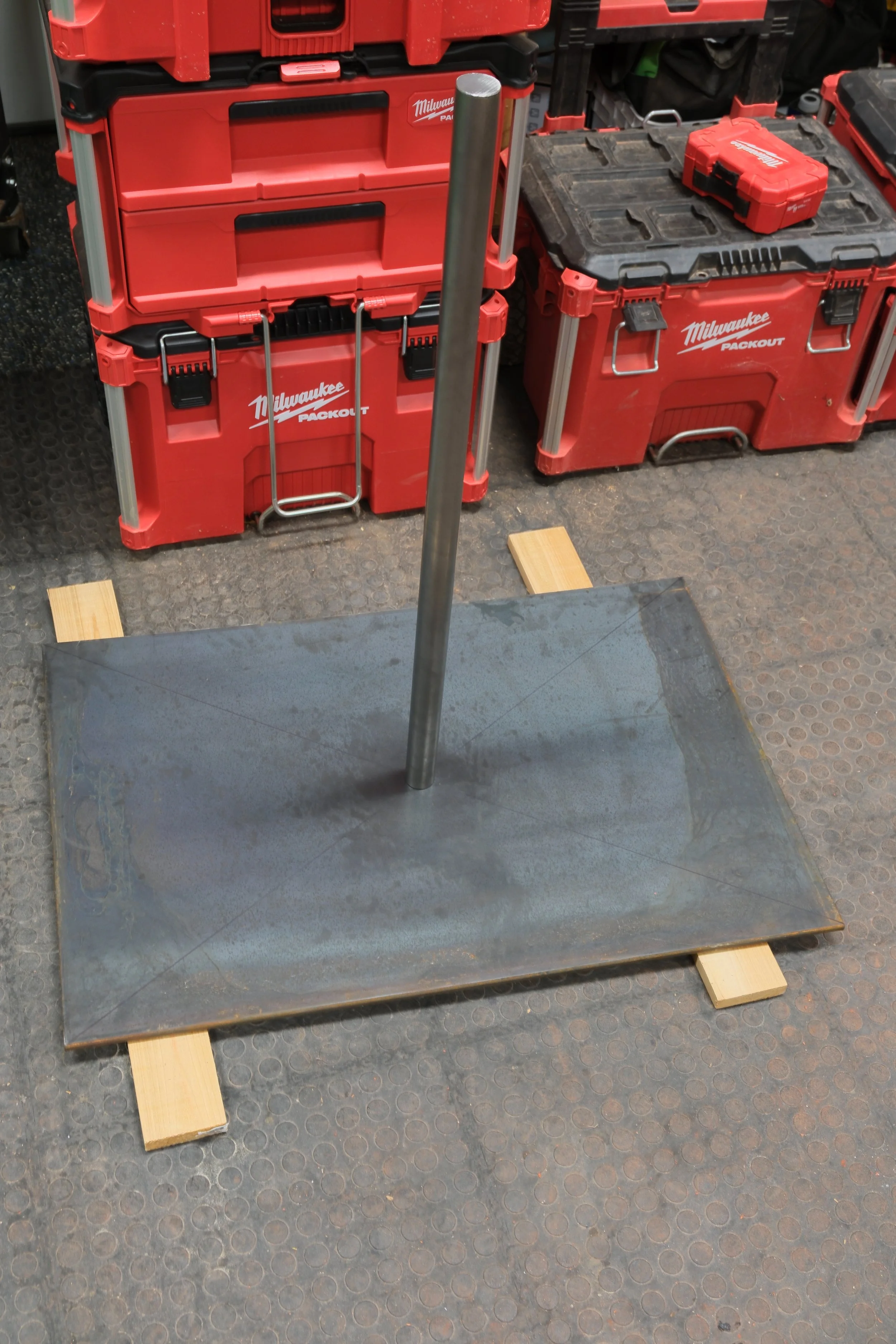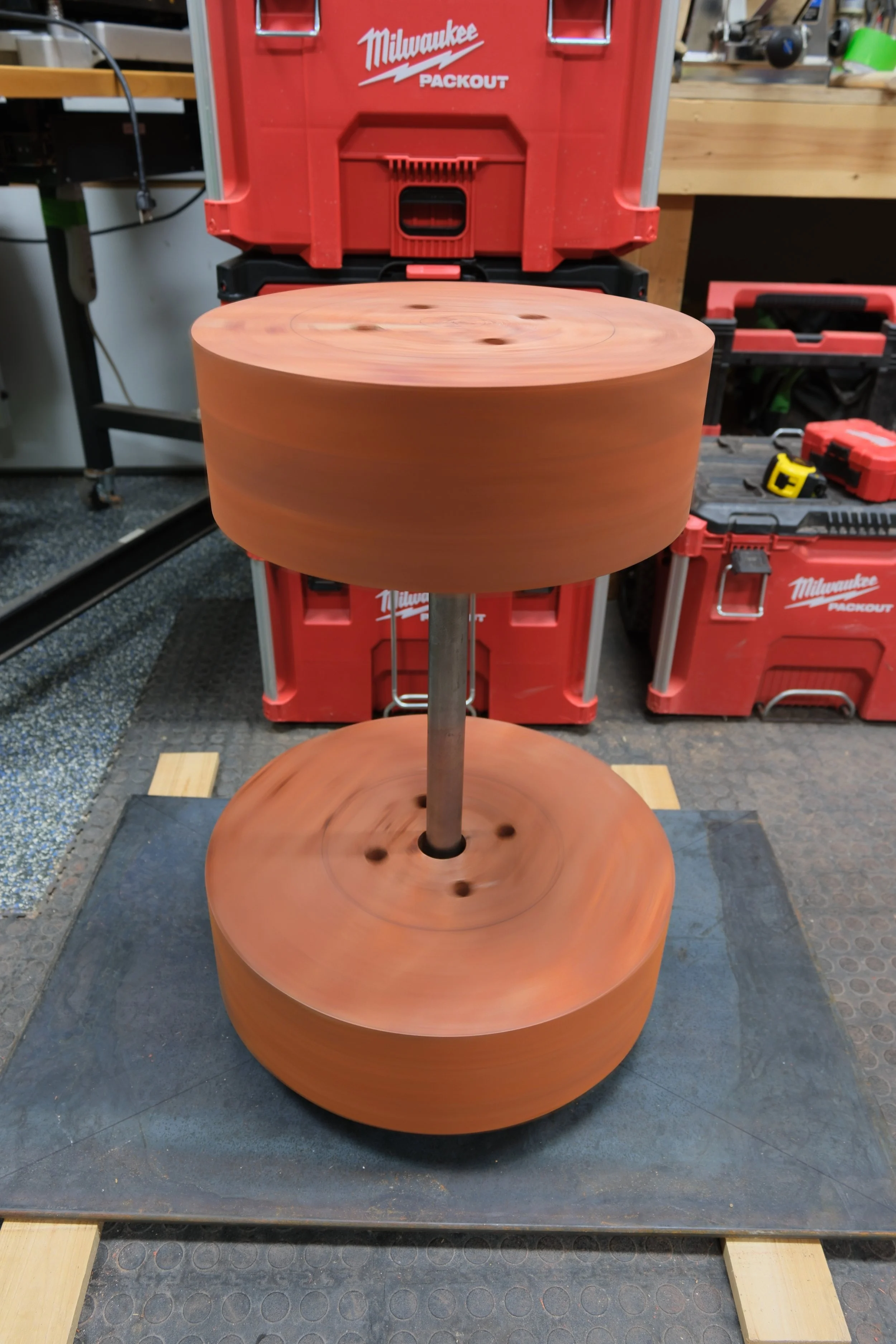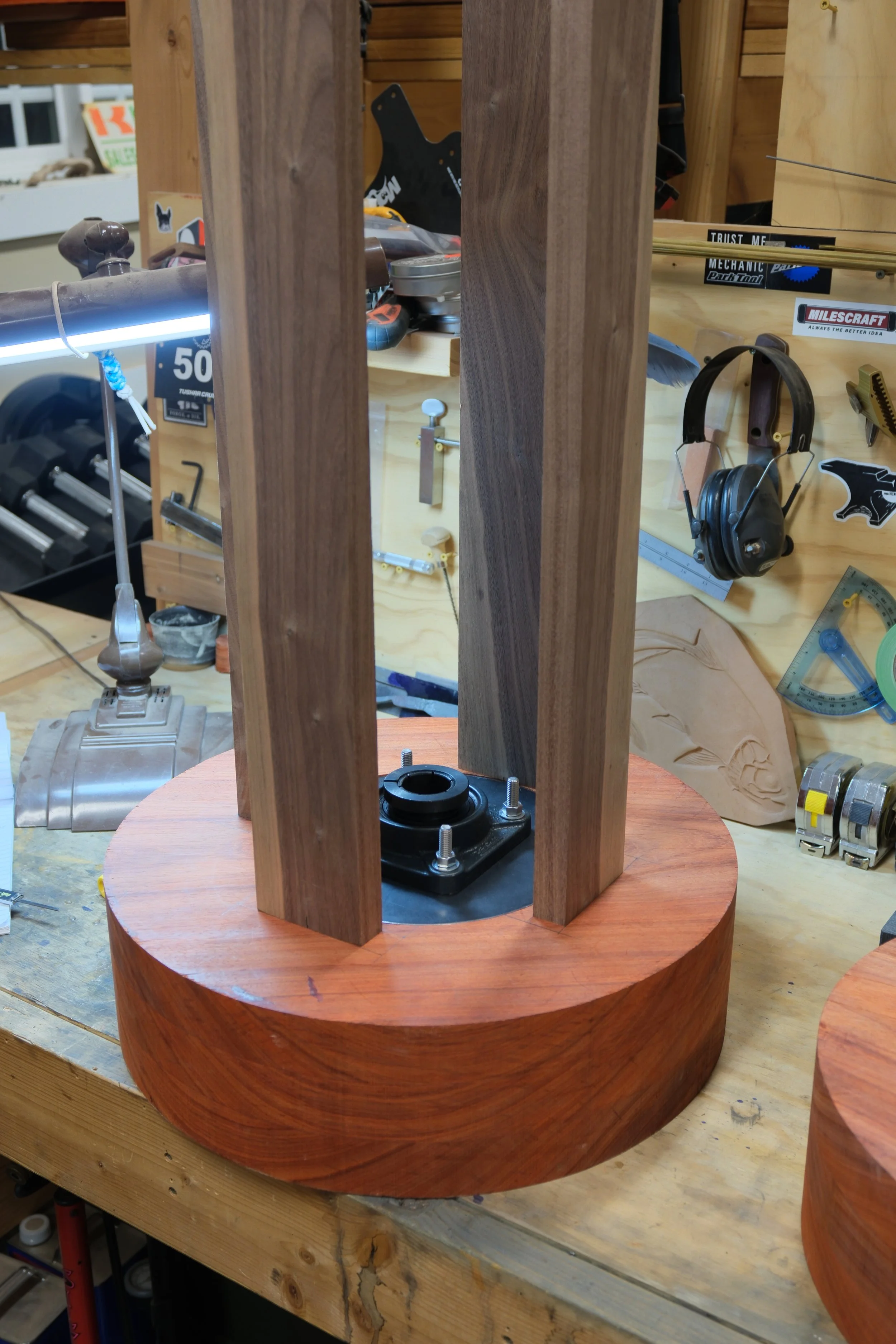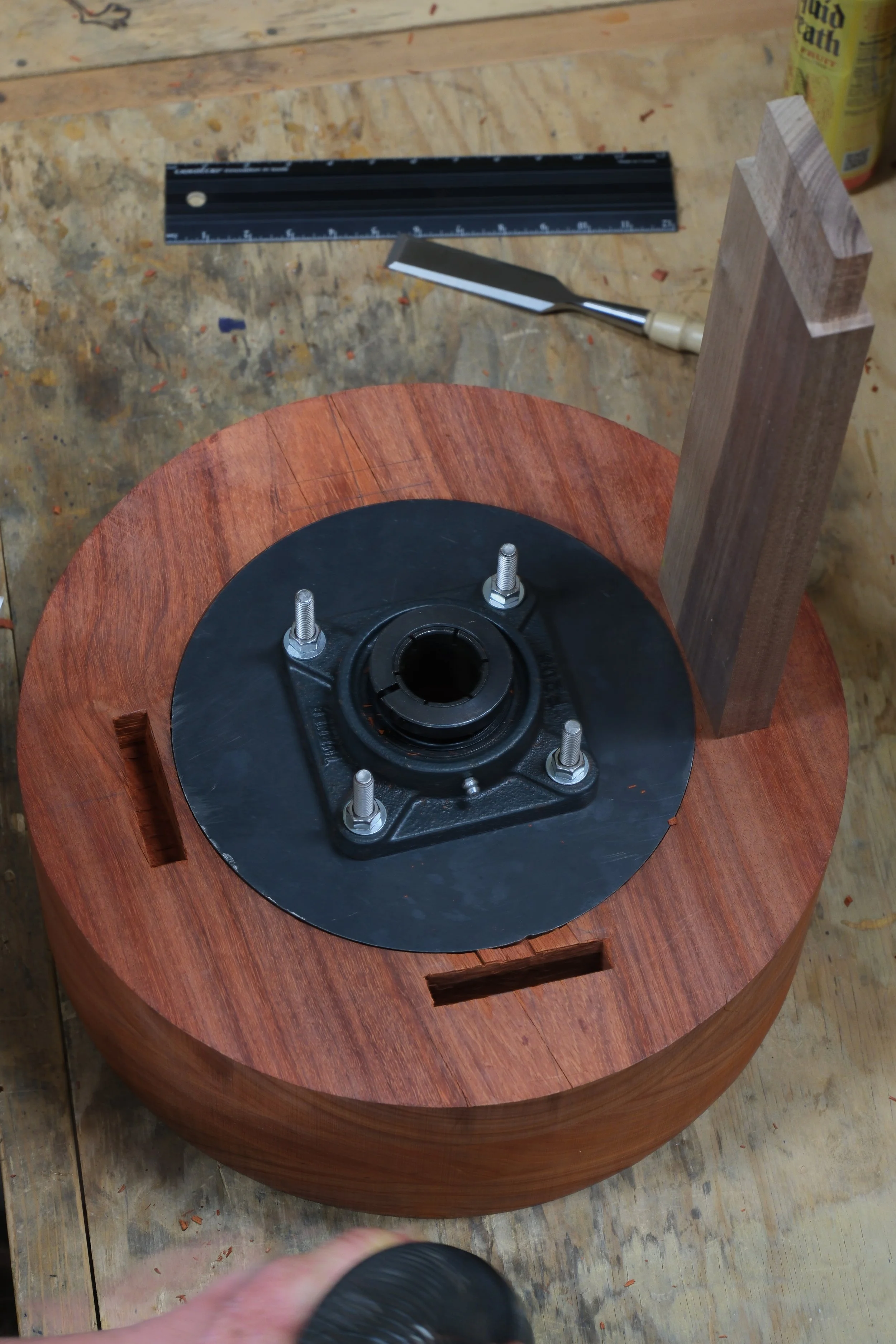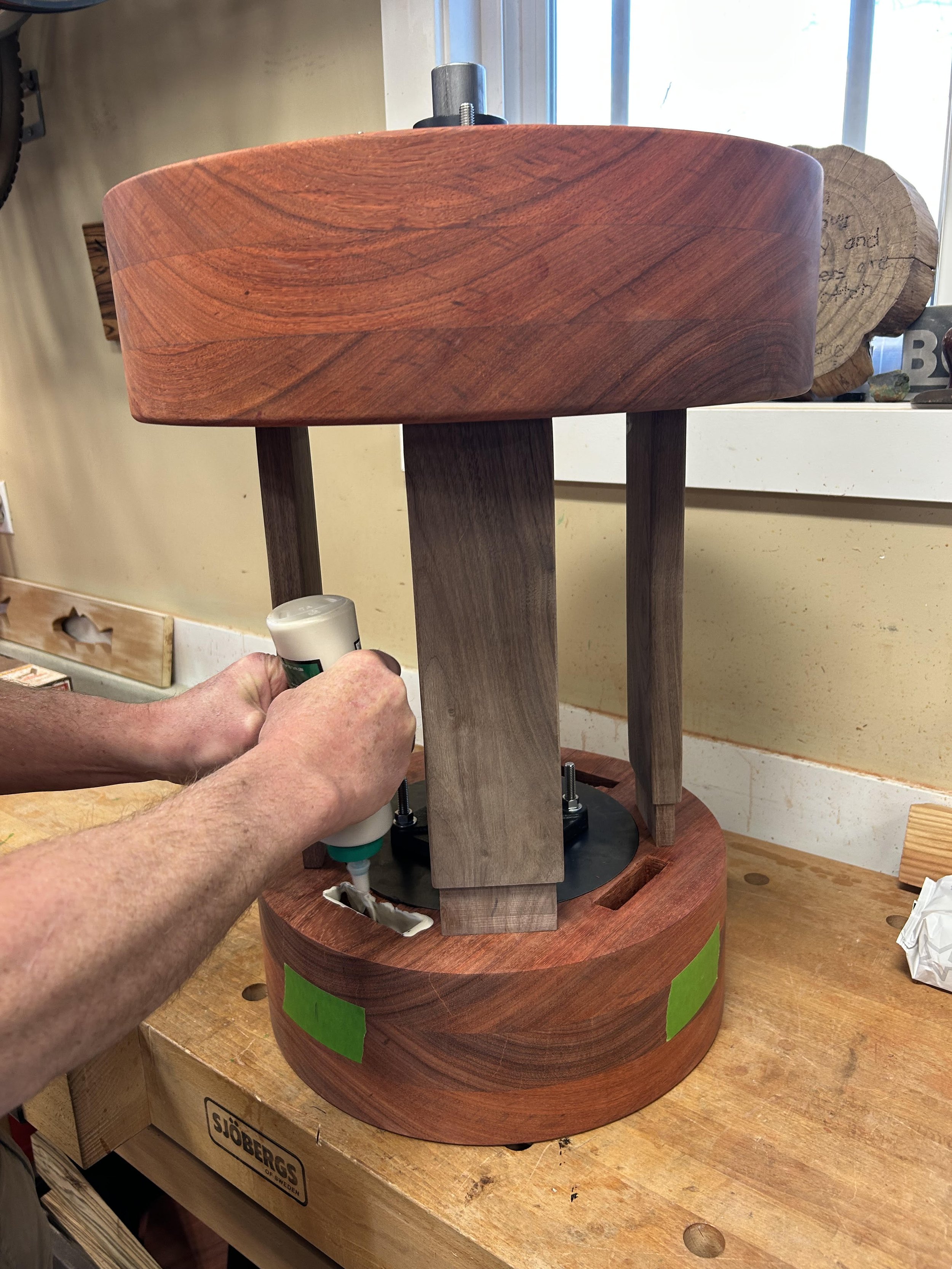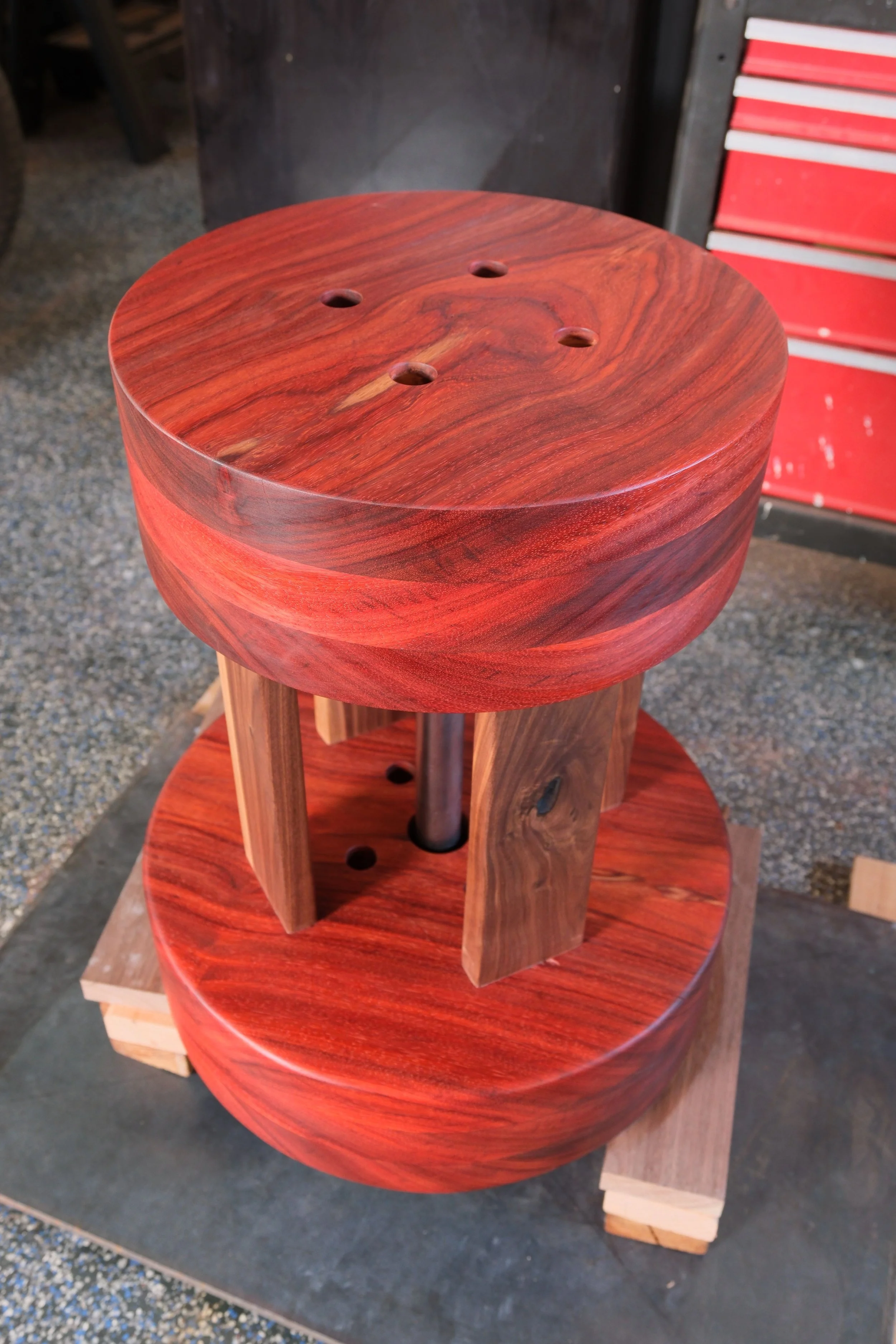The design of my kick wheel was inspired by traditional Japanese wheels and was built by me and my father, with walnut used for the connecting boards and the top and bottom made from a very large slab of paduak, which was cut up into six equal pieces.
my kick wheel.
how the wheel was built.
Building the wheel was no easy project. We began by visiting our local hardwood lumber supplier, where we picked up a large slab of padauk and a few boards of walnut. The lumberyard cut the padauk slab into six equal pieces for us. It was heartbreaking to see such an incredible piece of exotic wood sliced up, but we knew it was for a good purpose.
The design of the wheel was inspired by traditional Japanese kick wheels, but everything beyond that was developed by my dad and me. From the size of the wheel to how it would spin, how the bearings would be mounted, the shaft, the body, and the mounting plate—every detail was carefully thought through. We spent a long time discussing and refining the design.
why a kick wheel?
I was initially inspired by Japanese pottery to build a kick wheel, but to understand why I chose a kick wheel, you have to look at how the type of wheel you use can actually shape the pots you make. That was the main driving force behind building my own.
When you're using a kick wheel, you have to throw lightly—if you apply too much force, the wheel slows down quickly. So you're naturally encouraged to throw in a more efficient, gentle way. It shifts your whole approach to the clay.
Another thing the kick wheel does while you're throwing is encourage more organic forms. Since the momentum of the wheel changes constantly, there's a natural rhythm to it that leads to more expressive, less mechanical pots. It makes the process feel more connected—more alive.
